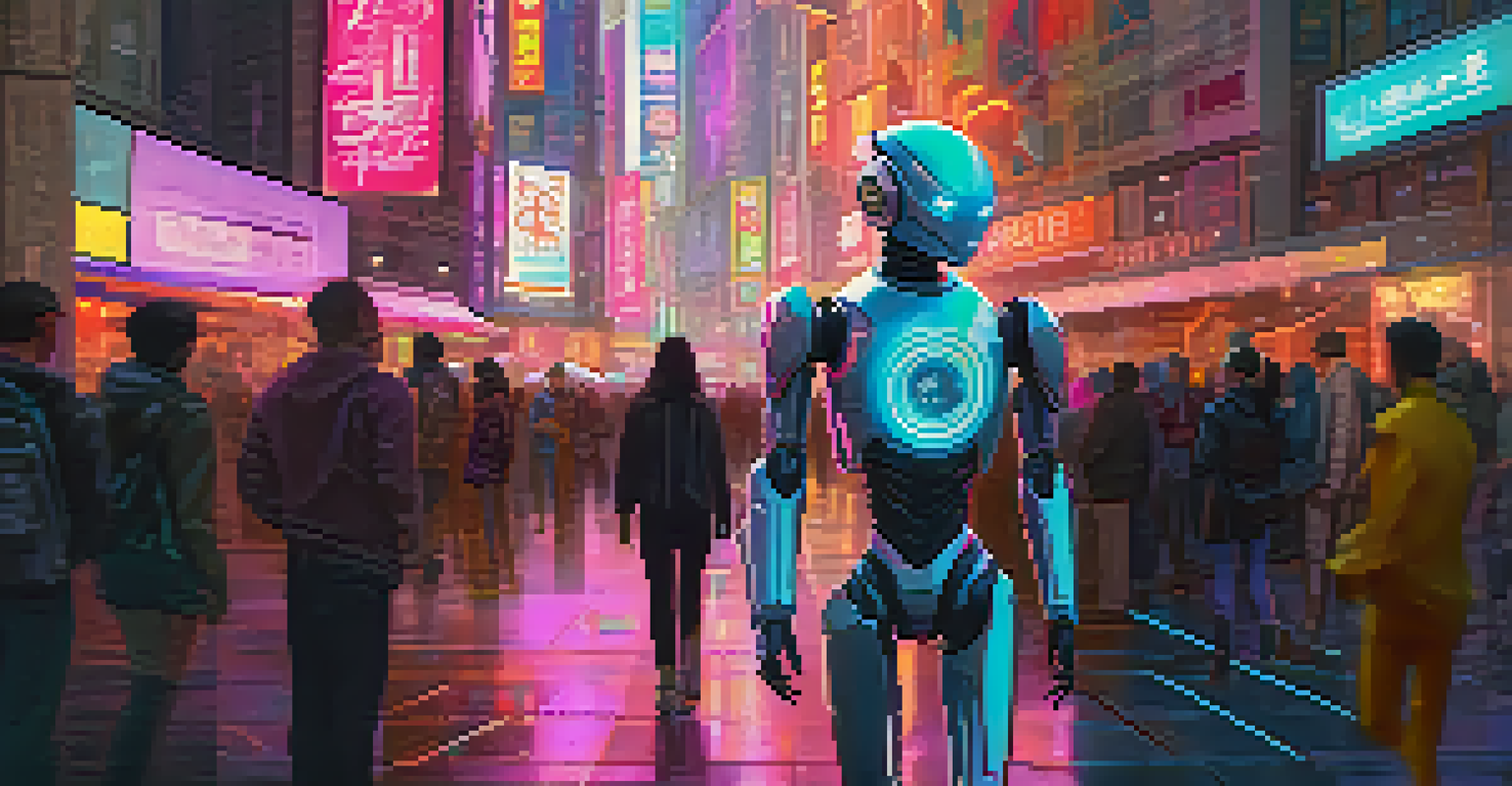Understanding the Basics of Digital Illustration Techniques

What is Digital Illustration and Why It Matters
Digital illustration is the art of creating images using digital tools and software. Unlike traditional illustration, which might involve pencils or paints, digital illustration allows for endless creativity through technology. It's widely used in various fields such as advertising, gaming, and publishing, making it an essential skill in today's visual culture.
Digital illustration allows artists to explore new styles and share their work with a global audience.
One of the biggest advantages of digital illustration is the ability to easily edit and modify your artwork. You can experiment with colors, shapes, and effects without the commitment of traditional mediums. This flexibility encourages artists to take risks and explore new styles, ultimately enhancing their creative expression.
Moreover, the rise of social media and online platforms has made it easier for digital illustrators to share their work with a global audience. This exposure can lead to opportunities for collaboration, commissions, and even a steady income stream, emphasizing the relevance of mastering digital illustration techniques.
Essential Tools for Digital Illustration
To get started with digital illustration, you'll need the right tools. A quality graphics tablet is often recommended, as it provides a natural drawing experience similar to pen and paper. Additionally, software options like Adobe Illustrator or Procreate offer a range of features that can help bring your ideas to life.

Choosing the right software can feel overwhelming, but it's essential to find one that matches your style and needs. Some programs are tailored for specific types of illustrations, while others offer more versatility. Experimenting with different tools can help you discover what works best for you.
Digital Illustration's Versatility
Digital illustration allows for endless creativity, making it essential in fields like advertising, gaming, and publishing.
Furthermore, keeping your tools updated is crucial. As technology evolves, so do the features and capabilities of your software. Regularly exploring new tools and updates can enhance your workflows and keep your artwork fresh and engaging.
Understanding Color Theory in Digital Illustration
Color theory is a fundamental aspect of digital illustration that can significantly impact your artwork. It involves understanding how colors interact, complement, and contrast with one another. This knowledge helps you create visually appealing designs and evoke specific emotions in your audience.
Art is not freedom from discipline, but disciplined freedom.
For instance, warm colors like red and orange can create feelings of warmth and energy, while cooler colors like blue and green often evoke calmness. By strategically choosing your color palette, you can guide viewers' feelings and reactions to your illustrations.
Moreover, digital tools often come equipped with color pickers and palettes that can simplify the process of selecting colors. Experimenting with different combinations can be a playful way to enhance your understanding of color theory and refine your illustration skills.
Mastering Composition Techniques
Composition is the arrangement of visual elements within an artwork, and mastering it is crucial for effective digital illustrations. Techniques like the rule of thirds or leading lines can guide viewers' eyes and create a sense of balance in your work. Understanding these principles allows you to create more engaging and dynamic images.
For example, placing focal points off-center can create more interest and movement in your illustrations. Similarly, using leading lines can draw the viewer's attention to important elements. These compositional techniques can transform a simple illustration into a captivating visual narrative.
Key Tools for Digital Artists
Having the right tools, such as a quality graphics tablet and suitable software, is crucial for bringing your ideas to life.
As you experiment with different compositions, don't be afraid to break the rules. Sometimes, unconventional arrangements can lead to striking and memorable artwork. The key is to practice and continually refine your skills to find what resonates best with your style.
The Importance of Line Quality
Line quality refers to the characteristics of the lines used in your illustrations, including thickness, texture, and smoothness. High-quality lines can add depth and dimension to your artwork, making it more visually appealing. By varying line quality, you can convey different emotions and create a unique style.
For instance, bold, thick lines can suggest strength and confidence, while thin, delicate lines may evoke fragility or elegance. Experimenting with line quality allows you to express your artistic voice and differentiate your work from others.
Additionally, digital tools often provide brushes that can mimic traditional media, giving you the flexibility to explore various styles. Practicing different line techniques can significantly enhance your illustrations, making them stand out in a crowded digital landscape.
Exploring Texture in Digital Illustration
Texture adds depth and richness to your digital illustrations, making them feel more lifelike and engaging. By incorporating textures, you can create a sense of realism or stylization, depending on your artistic goals. Textures can be added through brushes, overlays, or by layering different elements in your artwork.
For example, if you're illustrating a landscape, adding texture to the trees and grass can evoke a sense of the natural world. Similarly, textures can enhance character designs by adding detail to clothing and skin. This attention to texture helps viewers connect more deeply with your illustrations.
Importance of a Strong Portfolio
A well-curated portfolio showcasing your skills and style is vital for attracting potential clients and opportunities.
Don't hesitate to experiment with different textures and find what complements your style. There are countless resources available online, from texture packs to tutorials, to help you enhance your illustrations and make them truly unique.
Building Your Digital Illustration Portfolio
Creating a strong portfolio is essential for showcasing your digital illustration skills to potential clients or employers. Your portfolio should reflect your unique style and versatility, demonstrating a range of techniques and subjects you've mastered. Consider including pieces that highlight your strengths and areas of expertise.
Additionally, presenting your work in a visually appealing format can make a significant difference. Consider organizing your portfolio by theme or technique, making it easy for viewers to navigate and appreciate your work. A well-structured portfolio can leave a lasting impression and open doors to new opportunities.

Furthermore, don't forget to regularly update your portfolio with new work. As you grow and refine your skills, showcasing your latest projects can keep your portfolio fresh and relevant. Engaging with the digital illustration community can also provide valuable feedback and inspire new ideas for your artistic journey.